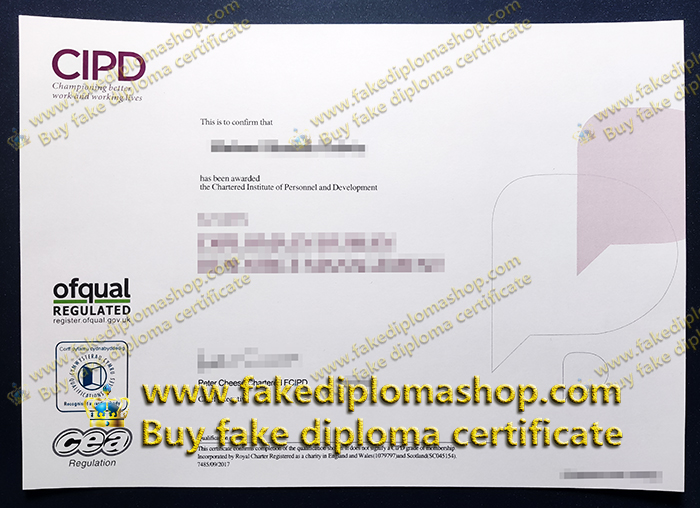
CIPD Level 5 diploma, Chartered Institute of Personnel and Development Level 5 diploma
CIPD Level 5 diploma for sale, Order a fake Chartered Institute of Personnel and Development certificate. Where to find a fake diploma shop to buy a fake CIPD certificate of Level 5? Can I buy a fake CIPD Level 5 certificate for a better job? Who can make the best Chartered Institute of Personnel and Development Level 5 diploma for me? Purchase a fake Level 5 diploma of CIPD. The Chartered Institute of Personnel and Development (CIPD) is an association of human resource management professionals. Its headquarters is located in Wimbledon, London, United Kingdom.
From Britain, factory inspectors were first appointed in 1893. In 1896, Rowntree appointed their first inspector – Mrs EM Wood – in order to look after its women and child workers. In 1909, Edward Cadbury of Cadbury Brothers summoned employers to discuss industrial welfare work, with the result that 25 employers formed an association with Mrs Wood of Rowntree as secretary. The work of “welfare workers” came to public attention at a trade show held at Olympia, London, in 1912.
The CIPD’s predecessor, the Welfare Workers Association (WWA), was founded on 6 June 1913 at an employers’ conference in York. And the conference was chaired by Seebohm Rowntree. As well as his company, around 50 other Rowntree companies were also present, among them: Boots, Cadbury and Chivers and Sons. The 34 employers present decided to establish WWA as… An association of employers interested in industrial improvement and the welfare workers they employ.
Where to get CIPD Level 5 diploma services?
The outbreak of the First World War In 1914, when many women and children took up men’s jobs, especially in the larger munitions factories, the appointment of welfare officers was mandated by legislation and overseen by the Munitions Workers’ Health Committee. This led to a rapid expansion of female welfare workers. There were concerns about the training of welfare workers, and at a conference in Leeds in 1917, the seven welfare associations formed during this period agreed to merge and form the Central Welfare Workers Association to accommodate regional associations, creating the Central Welfare Workers Association. The beginning of the local branch structure.
During the war years, as the state encouraged workers to join, the status of the association also strengthened the union and reduced the occurrence of industrial conflicts. Another development that increased the number of company employees dealing with labor and welfare matters occurred with the addition of managers (mostly men) of industrial associations in the Northwest region to assist with discipline, dismissal, and industrial relations in the increasingly unionized organization. In 1918, to avoid confusion about its purpose, the association changed its name to the Central Welfare Workers Association (Industry) (CAWWI).

